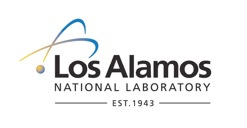LANL News: Los Alamos Achieves 20-Year Low on Radioactive Air Emissions
Los Alamos National Laboratory sent this bulletin at 09/11/2014 11:18 AM MDT
News Release
Patti Jones, LANL, 505-665-7748, pjones@lanl.gov
Los Alamos Achieves 20-Year Low on Radioactive Air Emissions
Annual dose rate from the Laboratory far below EPA limit
LOS ALAMOS, N.M., September 10, 2014—Los Alamos National Laboratory achieved its lowest radioactive air emissions rate in 20 years in 2013, according to annual air quality results released recently.
Each year, the Laboratory measures air emissions through a comprehensive system of 40 air monitoring stations located at the Laboratory and in neighboring communities that provide data about ambient air quality. The Laboratory monitors 80 minor sources and 29 major sources at the Laboratory, such as exhaust stacks from radiological and nuclear facilities.
In 2013, the Los Alamos offsite dose rate was 0.21 millirem, about 2 percent of the Environmental Protection Agency's Clean Air Act limit of 10 millirem. This 20-year low is attributed to focused, more efficient operations and the cleanup of legacy environmental sites.
“The Laboratory has worked diligently to ensure the air is as clean as possible,” said Hai Shen of the Department of Energy's Los Alamos Field Office. “It's clear from these results that the air continues to be safe to breathe.”
A dose is the amount of radiation energy absorbed by the body. Dose rates are calculated in millirems, a unit of radioactive dose measurement. The National Council on Radiation Protection and Measurement estimates the average radiation dose per person in the U.S. is 620 millirems each year, with about half coming from natural background sources and the other half from medical diagnostic procedures and treatments.
“The goal of our air monitoring program is to ensure and demonstrate that the Laboratory is protecting human and environmental health,” said Michael Brandt, associate director of Environment, Safety and Health at the Laboratory. “We have a highly qualified, professional staff whose daily actions keep the offsite dose as low as reasonably achievable. It exemplifies the Laboratory's commitment to environment, safety and health.”
